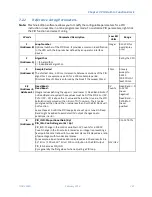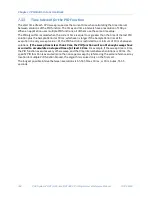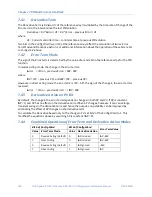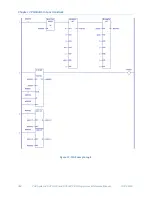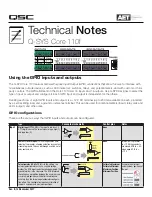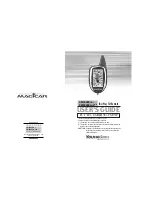
Chapter 7. PID Built-In Function Block
350
PACSystems* RX7i, RX3i and RSTi-EP CPU Programmer's Reference Manual
GFK-2950C
Words
Parameter/Description
Low Bit
Units
Range
13
(12)
Config Word
The low 6 bits of this word are used to modify default PID settings.
The other bits should be set to 0.
Bit 0: Error Term Mode.
When this bit has the default value of 0, the error term is SP - PV.
If the Error=SP-PV is positive, the CV output will decrease.
If the Error=SP-PV is negative, the CV output will increase.
This is type of operation is known as
reverse acting.
A good example is
your home heating system.
When this bit is 1, the error term is PV - SP.
If the Error=PV-SP is positive, the CV output will increase.
If the Error= PV-SP is negative, the CV output will decrease.
This type of operation is known as
direct acting.
A good example is
your home cooling system.
Bit 1: Output Polarity.
When this bit is 0, the CV output is the output of the PID calculation.
When it is set to 1, the CV output is the negated output of the PID
calculation. Setting this bit to 1 inverts the Output Polarity so that CV
is the negative of the PID output rather than the normal positive
value.
Bit 2: Derivative Action on PV.
When this bit is 0, the derivative action is applied to the error term.
When it is set to 1, the derivative action is applied to PV only.
Bit 3: Deadband action.
When the Deadband action bit is 0, the actual error value is used for
the PID calculation.
When the Deadband action bit is 1, deadband action is chosen. If the
error value is within the deadband limits, the error used for the PID
calculation is forced to be zero. If, however, the error value is outside
the deadband limits, the magnitude of the error used for the PID
calculation is reduced by the deadband limit (|error| = |error
–
deadband limit|).
Bit 4: Anti-reset windup action.
When this bit is 0, the anti-reset-windup action uses a reset (integral
term) back-calculation. When the output is clamped, the accumulated
integral term is replaced with whatever value is necessary to produce
the clamped output exactly.
When the bit is 1, the accumulated integral term is replaced with the
value of the integral term at the start of the calculation. In this way,
the pre-clamp integral value is retained as long as the output is
clamped. This option is not recommended for new applications. Refer
to
CV Amplitude and Rate Limits
Bit 5: Enable derivative filtering.
When this bit is set to 0, no filtering is applied to the derivative term.
When set to 1, a first order filter is applied. This will limit the effects of
higher frequency process disturbances, such as measurement noise,
on the derivative term.
Low 6
bits used
Boolean
Summary of Contents for PACSystems RSTi-EP
Page 357: ......
Page 466: ...Chapter 9 Diagnostics GFK 2950C February 2018 451 ...












